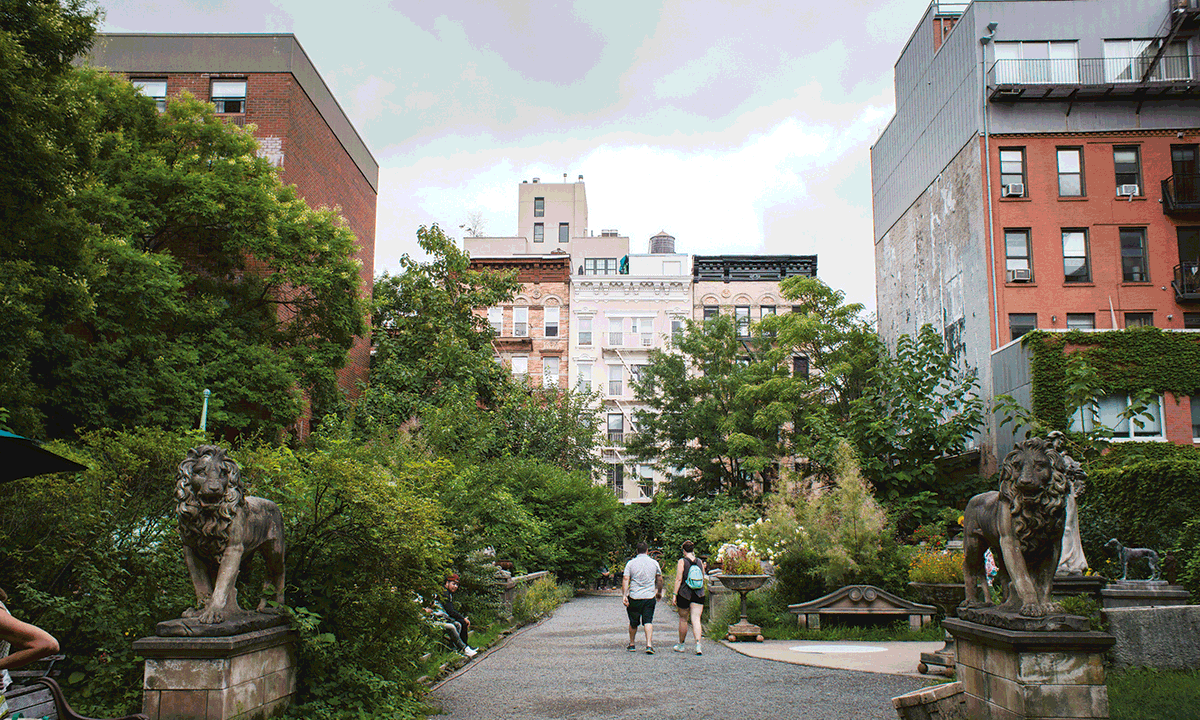Twinkling pearls of salmon roe gleam on top of succulent slices of taro, while a platter of oysters glistens under the gallery spotlights. A bright red crab sparkles next to slices of seared tuna that glow with almost radioactive intensity, alongside a shimmering slab of intricately marbled wagyu beef. Around the room spreads a gob-smacking buffet of the plumpest grapes, freshest sashimi and silkiest bowls of broth imaginable, as if plucked from a parallel universe where everything looks fresher, brighter and better-tasting than reality.
The parallel universe in question is the Japanese restaurant window – a place that has long gleamed with astonishing displays of impossibly realistic replica dishes, or shokuhin sanpuru, designed to lure customers inside. Honed over the last century, this dazzling art form has now been brought to Britain in the form of a mouthwatering exhibition at Japan House, the cultural centre operated in London by the Japanese embassy. Marvels of soft diplomacy in action, every show here seems calibrated to make you want to jump straight on a flight eastwards – or, in this case, run to the nearest Japanese restaurant.
The exhibition programme has so far focused on more conventional notions of regional craft, ranging from the metalwork of Tsubame-Sanjo to the artefacts of the Indigenous Aiynu people in Hokkaido, but this show tackles a ubiquitous commercial phenomenon head on, with exquisitely appetising results. An exhibition has never made me salivate so much.
The curious practice of displaying fake food first originated in the 1920s, when department store food halls in Japan’s major cities were beginning to try out western dishes on their curious but cautious customers. You can see why diners might have been apprehensive. A 1950s model of a western-style steak in the exhibition, surrounded by limp boiled vegetables and piped mashed potato, looks distinctly unappetising next to the bright platters of sushi.
But the technique soon spread beyond foreign food, partly as a way of handling crowds – who could view the model dishes and place their orders before being seated – but also as a way of managing expectations and showing portion sizes, helping to avoid both food waste and unhappy customers.
Across Japan, you can now find replica dishes in all kinds of establishments, from the windows of high-end confectioners to cheap chain restaurants, kissaten tearooms, izakaya grills and ramen bars. Each display looks uncannily exaggerated, like seeing the world on a high definition screen, brightness and saturation turned up to the max.
“The idea isn’t always to make the food look as realistic as possible,” says curator Simon Wright. “But to evoke people’s haptic memories of the dishes. For example, red bean paste might be made to look grainer than it is in reality, because people remember the grainy texture in their mouths.” The counterfeit craftsperson’s job is to conjure a kind of hyperreality, where everything looks crispier, fresher, and more colourful than its real-world counterpart, creating an intensified, super-glossy state of culinary perfection.
The 200-plus models in the exhibition are all the work of the Iwasaki Group , Japan’s largest replica food manufacturer, founded by Takizō Iwasaki in the 1930s. He had been fascinated by the properties of wax as a child, observing how it created a perfect imprint when it fell on a tatami mat, or how it formed the shape of a flower when dropped into water. Encountering food replicas as an adult, he experimented at home, casting food in agar jelly, then pouring hot wax into the mould. His eureka moment came when he managed to cast an omelette his wife had made. A replica of the legendary “celebration omelette” is on show in the exhibition, its perfectly wrinkled skin and dollop of ketchup sealed beneath a glossy coat of lacquer.
You might assume these things are now industrially produced, injection-moulded on a production line, but the process has changed remarkably little since Iwasaki’s kitchen experiments. Durable PVC took over from wax in the 1970s, but the manual process remains the same: each element of a dish is cast in a block of silicone, before PVC is poured into the mould, then each piece individually painted by hand, using air brushes and detailed paintbrushes, with precisely patterned stencils used for things like marbling and veining.
A series of step-by-step models reveals the process in the exhibition, alongside videos from the workshops in Gujō Hachiman, Iwasaki’s birthplace, which has since become the country’s capital of fake food. It shows how some elements are still cast in wax, like lettuce, where thin sheets of green and white wax are carefully poured out on to water, then rolled and scrunched up into crisply layered balls.
The skill is breathtaking. A series of models from the company’s annual in-house competition provides a showcase for the craftspeople to flex their model-making muscles and pull out all the stops. One replicates the exact texture of a slice of cheese on toast being pulled apart, one half dangling impossibly in midair, connected with a gooey tangle of melted strings. Another recreates bacon and eggs in a frying pan, complete with crispy white edges and a broken, oozing yoke. A third takes the unreality a step further, with a tableau of a crab drinking a glass of beer, blobs of foam dripping down its thirsty little face.
The show goes beyond history and technique, the main event being a map-shaped constellation of plinths of regional dishes from every one of Japan’s 47 prefectures. Behold the fugu of Yamaguchi, delicate slices of translucent pufferfish arranged in the shape of a chrysanthemum flower; or the Jibu-ni of Ishikawa, a dish of duck garnished with gold leaf – a speciality of this wealthy region, originally reserved for samurai families. Would you brave the zunda-mochi, glutinous rice cakes covered in a vibrant green slop of mashed edamame beans; or the crusty fermented fish of Fukui? The silver-stripe herring sashimi of Kagoshima was apparently the most difficult dish to make, each delicate silver line appearing to float in the transparent fish flesh.
The educational theme continues in a section on other curious applications for these models, beyond the world of restaurant windows. A carrot in progressive stages of destruction – from slices to cubes to purée to liquid mush – turns out to be a kitchen aid for cooks in old people’s homes. Another display (best avoided) shows the fat content of a croissant, the amount of sugar in orange juice, and the volume of salt in instant noodles. Another wall depicts the various components of the recommended daily intake in Japan: a bounty of fresh veg that puts the UK’s “five a day” to shame.
When it all gets too healthy, there’s a window display of sweets and treats to boost the calorie count. It features retro classics like lurid green melon soda and sundaes topped with whipped cream (one of the trickiest textures to recreate). Such 1960s diner staples have enjoyed a resurgence as part of the vintage revival of kissaten (particularly jun-kissa, or “pure” coffee and tea houses) among Japan’s gen Z. Their menus of custard pudding, ketchup spaghetti and crustless white sandwiches have remained largely unchanged.
Some of these rich confections feature on the poster campaign for the exhibition, which raised alarm bells with the advertising authorities, who demanded to know the calorific value of the puddings, given restrictions on advertising junk food. Japan House proudly answered: zero. As tempting as it all looks, this banquet of PVC and resin won’t widen your waistline. Just don’t visit on an empty stomach.








